 The Super-Earth planet named GJ 357 d was discovered in early 2019 owing to NASA’s Transiting Exoplanet Survey Satellite (TESS), a mission designed to comb the heavens for exoplanets. Scientists have characterised the first potentially habitable world outside our own solar system located about 31 light-years away. The Super-Earth planet named GJ 357 d was discovered in early 2019 owing to NASA’s Transiting Exoplanet Survey Satellite (TESS), a mission designed to comb the heavens for exoplanets. Scientists have characterised the first potentially habitable world outside our own solar system located about 31 light-years away. |
| Source: The Livemint |
 A research team at IIT Kharagpur has developed a technology which can generate energy from solid waste with high moisture content. The new technology Hydro Thermal Carbonization (HTC) can convert municipal solid waste to biofuel, soil amendment and absorbents. These processes require high energy input to combust municipal solid waste generated in India which has high moisture content due to tropical weather, open collection systems and mixed waste. A research team at IIT Kharagpur has developed a technology which can generate energy from solid waste with high moisture content. The new technology Hydro Thermal Carbonization (HTC) can convert municipal solid waste to biofuel, soil amendment and absorbents. These processes require high energy input to combust municipal solid waste generated in India which has high moisture content due to tropical weather, open collection systems and mixed waste. |
| Source: The Economic Times |
 Scientists at IIT Hyderabad have developed low-cost, environment-friendly solar cells by employing an off-the-shelf dye used to make kumkum or vermilion. The dye-sensitised solar cell (DSSC) is based on New Fuchsin (NF) dye with aqueous electrolyte and platinum-free counter electrodes, according to the research published in the Solar Energy journal. Scientists at IIT Hyderabad have developed low-cost, environment-friendly solar cells by employing an off-the-shelf dye used to make kumkum or vermilion. The dye-sensitised solar cell (DSSC) is based on New Fuchsin (NF) dye with aqueous electrolyte and platinum-free counter electrodes, according to the research published in the Solar Energy journal. |
| Source: The DD News |
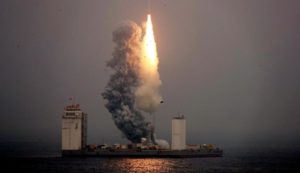 Beijing-based startup “Interstellar Glory Space Technology” also known as iSpacesuccessfully launched the china’s first commercial rocket. The 20 m (66-foot) rocket designed by iSpace named Hyperbola-1 reached an altitude of 300 kilometres (186 miles). The rocket is capable of carrying satellites into orbit. Beijing-based startup “Interstellar Glory Space Technology” also known as iSpacesuccessfully launched the china’s first commercial rocket. The 20 m (66-foot) rocket designed by iSpace named Hyperbola-1 reached an altitude of 300 kilometres (186 miles). The rocket is capable of carrying satellites into orbit. |
| Source: The Hindustan Times |
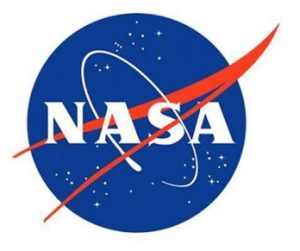 U.S. space agency NASA prepares to send “first woman and next man” on Moon as part of its ambitious Artemis programme in 2024. NASA has marked the 50th anniversary of the historic first Moon landing. U.S. space agency NASA prepares to send “first woman and next man” on Moon as part of its ambitious Artemis programme in 2024. NASA has marked the 50th anniversary of the historic first Moon landing. |
| Source: The Hindu |
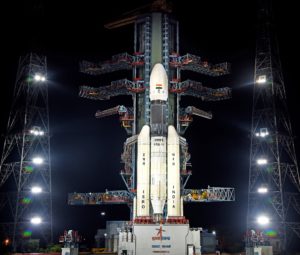 |
| Indian Space Research Organisation launched Chandrayaan 2 from Satish Dhawan Space Center at Sriharikota. It was launched by GSLV MkIII-M1 Vehicle at 14:43 hours IST. The lander-Vikram will land near South Pole of the moon on Sep 7, 2019. Chandrayaan 2 is India’s 2nd moon mission. |
| Source: The ISRO |
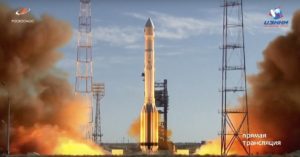 Russia launched a space telescope from the cosmodrome in Baikonur, Kazakhstan. It was a joint project with Germany. The Russian space agency, showed a Proton-M rocketcarrying the Spektr-RG taking off from the launch pad. The Spektr-RG, is a space observatory intended to replace the Spektr-R, known as the “Russian Hubble”, Spektr-R was launched in 2011 to observe black holes, neutron stars and magnetic fields. Its successor will take up similar duties. Russia launched a space telescope from the cosmodrome in Baikonur, Kazakhstan. It was a joint project with Germany. The Russian space agency, showed a Proton-M rocketcarrying the Spektr-RG taking off from the launch pad. The Spektr-RG, is a space observatory intended to replace the Spektr-R, known as the “Russian Hubble”, Spektr-R was launched in 2011 to observe black holes, neutron stars and magnetic fields. Its successor will take up similar duties. |
| Source:The Hindu |
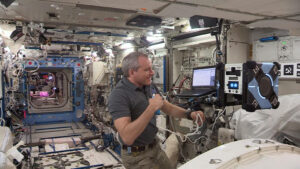 National Aeronautics and Space Administration’s robot named Bumble became the first Astrobee robot to fly under its own power in space. Astrobee is a free-flying robot system that will help researchers test new technologies in zero gravity and perform routine work alongside astronauts aboard the International Space Station. Astrobee robots can move in any direction and turn on any axis in space. National Aeronautics and Space Administration’s robot named Bumble became the first Astrobee robot to fly under its own power in space. Astrobee is a free-flying robot system that will help researchers test new technologies in zero gravity and perform routine work alongside astronauts aboard the International Space Station. Astrobee robots can move in any direction and turn on any axis in space. |
| Source: NASA |
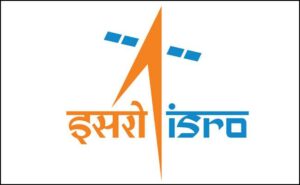 |
| The Indian Space Research Organization (ISRO) has, for the first time, opened itslaboratories for Indian school students to undergo two-week training from this year. The training module has been devised as part of its new Young Scientists Programme, or Yuva Vigyanik Karyakram, YUVIKA. |
| Source: DD News |
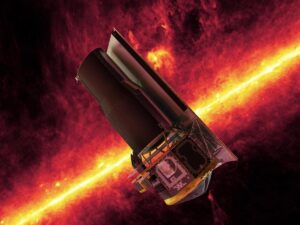 After nearly 16 years of exploring the cosmos in infrared light, NASA’s Spitzer Space Telescope will be switched off permanently on Jan. 30, 2020. Spitzer is a small but transformational observatory. It captures infrared light, which is often emitted by “warm” objects that aren’t quite hot enough to radiate visible light. Spitzer has lifted the veil on hidden objects in nearly every corner of the universe, from a new ring around Saturn to observations of some of the most distant galaxies known. After nearly 16 years of exploring the cosmos in infrared light, NASA’s Spitzer Space Telescope will be switched off permanently on Jan. 30, 2020. Spitzer is a small but transformational observatory. It captures infrared light, which is often emitted by “warm” objects that aren’t quite hot enough to radiate visible light. Spitzer has lifted the veil on hidden objects in nearly every corner of the universe, from a new ring around Saturn to observations of some of the most distant galaxies known. |
| Source: NASA |
You need to login to perform this action.
You will be redirected in
3 sec
